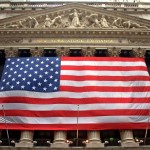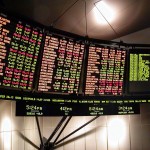An unforeseen consequence of monetary stimulus is emerging, and it points right back to the conditions that caused the 2008 crisis in the first place. The last crash was triggered by a derivative bubble comprised of risky sub-prime U.S mortgages that were re-packaged and sold on to investors. Now with bond yields having reached record lows; a direct result of artificially injected liquidity, traders are increasingly seeking higher-yielding investments and are finding them in complicated derivatives. While more transparent than the instruments that led to the 2008 crash, these complex financial products are highly leveraged and offer very little in the way of investor protection.
So the very measures being introduced to promote lending and liquidity could be leading to another crisis point in the near future, especially when the central banks begin to turn the liquidity spigot off.
Another feature of these investments is that they are also highly individualised, usually the result of an “over the counter” agreement between a bank and a purchaser rather than a standardised product sold on an exchange. As a result their complex terms and bespoke nature make them extremely difficult to shift when circumstances change. They also leave investors extremely vulnerable to the banks that offer them in ways they are not when purchasing lower yielding currencies, stocks, commodities and bonds. Should the bottom to fall out again and were just one of the banks offering them to fail, it could spell another crisis of global proportions before we’ve even managed to pull ourselves out of the last one.
A recent OECD report demonstrated that European banks alone were holding in excess of 6 trillion dollars’ worth of derivatives in March, and this isn’t even the most worrying statistic, the one that ought be causing concern is that this figure is 50 percent more than what was being held at the time of the 2008 collapse.
Chief among these present day derivatives are “auto-callable” notes, which provide investors with a fixed return if an underlying asset remains above a pre-set price. If it should drop below this mark the investor’s risk capital is eaten into according to the extent of the fall.
Another interesting statistic is that these auto-callable instruments now account for almost 60 percent of all derivatives sold through British independent financial advisors. But perhaps the most intriguing, perplexing and worrying thing about them is that they are tantamount to a bet on behalf of the institutions offering them, that the stocks and bonds they track will eventually come down as drastically as they did in 2008.
Open an Account





